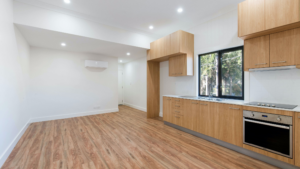
In the dynamic world of multifamily real estate, property owners and investors face a common challenge: loss-to-lease. Loss-to-lease refers to the difference between a property’s current rental income and the potential rental income it could generate if all units were leased at market rates. By implementing certain solutions, you can optimize your multifamily property’s profits while creating a conducive environment for happy, long-term residents.
Loss-to-Lease Problems
Below-Market Rents: The Rent Quandary
One of the most common reasons for loss-to-lease is charging rents that fall below the current market rates. While this might seem like an attractive proposition to attract prospects, it ultimately hampers your property’s revenue potential. To address this challenge, consider conducting a thorough market analysis regularly. Assess the rental rates of comparable properties in the area and adjust your rents accordingly. By aligning your rental prices with the market, you not only reduce loss-to-lease but also create a competitive edge that attracts quality residents.
Vacant Units: The Pursuit of Occupancy
Empty units lead to substantial loss-to-lease, as they generate no income until leased. To tackle this, prioritize resident retention and adopt proactive leasing strategies. Offering renewal incentives, conducting regular property maintenance, and creating an inviting community atmosphere can contribute to higher resident satisfaction and retention rates.
Concessions and Discounts: Balancing Incentives
While offering move-in specials and concessions can lure new residents, they may also lead to loss-to-lease in the long run. Finding the right balance between attracting residents with incentives and maintaining sustainable rental income is crucial. Instead of one-time concessions, focus on providing value through exceptional amenities and services. High-speed internet, fitness centers, pet-friendly policies, and modernized common areas can enhance resident satisfaction, justify rent rates, and prevent the need for excessive discounts. Alternatively, you can offer the promotion in different ways. If you’re promoting 2 months free rent, consider giving them months 2 and 5 free. You could also consider providing other promotions that could include gift cards or free streaming services.
Delinquent Rental Payments: The Payment Predicament
Delinquent rent poses a serious threat to your property’s revenue stream and can significantly contribute to loss-to-lease. Implement a stringent screening process to identify potential red flags before leasing to new residents. Additionally, establish clear and enforceable rent collection policies. Create open channels of communication to address resident concerns promptly, and if necessary, work out payment plans for struggling residents. Consistency and understanding in handling financial matters will foster a sense of trust and responsibility among residents.
Loss-to-Lease Solutions
Market Analysis and Rent Adjustments
To stay competitive and minimize loss-to-lease, regularly conduct market analyses to understand current rent trends in your area. Compare your property’s rental rates with similar properties, amenities, and location. Based on the data, make strategic adjustments to your rents to align them with the market while considering the unique selling points of your property.
Resident Retention Strategies
A thriving multifamily property relies on happy, long-term residents. Implement resident retention strategies, such as proactive communication, addressing maintenance concerns promptly, and recognizing loyal residents through incentives or rewards. By fostering a sense of community and belonging, you can encourage residents to stay for more extended periods, reducing vacancies and loss-to-lease.
Thoughtful Incentive Programs
Instead of relying solely on concessions and discounts, invest in meaningful amenities and services that justify higher rents. Modern appliances, well-maintained outdoor spaces, and community events foster a sense of value for tenants, making them more likely to accept reasonable rent rates.
Robust Tenant Screening
To avoid potential loss-to-lease from delinquent residents, employ a rigorous screening process before approving applications. Check credit histories, rental backgrounds, and references to identify reliable and responsible residents.
Preventing loss-to-lease in multifamily real estate requires a thoughtful approach that balances rental income with resident satisfaction. By aligning your rental rates with market trends, prioritizing resident retention, offering meaningful incentives, and implementing robust screening procedures, you can optimize your property’s profitability while creating a positive and desirable living environment for residents. Remember, success in multifamily real estate hinges on a win-win relationship between property owners and residents.
The Sales, Inc. Accelerated Leasing Program sends a highly trained leasing professional to your leasing office to focus solely on getting your property leased with quality, qualified applicants as soon as possible. Learn more about our Accelerated Leasing Program.

